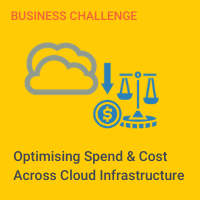
researchHQ’s Key Takeaways:
- Calculating the return on investment (ROI) of an integration as a platform (iPaaS) solution helps organisations determine the value of a particular solution in relations to their bottom line.
- When calculating ROI, the first step is determining the cost of the investment, this involves the total talent cost, hours of productivity, and the cost of the server and other overhead services.
- Effective investment in iPaaS demands a holistic view based on a shared department-specific or organization-wide vision.
The market for the integration platform as a service (iPaaS) is evolving and changing every aspect of businesses. While the digital age enterprise demands for effective ways to integrate modern solutions, they’re still skeptical about shifting to the Next Generation iPaaS. The market now speaks for itself. Yet, users are still confused, unaware of how and where to start, or what might be their Return on Investment (ROI).
ROI is used to determine the probability of gaining a return made from an investment. It helps measure the gain or loss from the investment made relative to its cost.
Well, here’s how you can use the key metrics to evaluate the ROI of an iPaaS platform.
1. Determine the total cost
When you’re considering to set up an integration solution, you need to think about the total setup costs and how you can best reduce it. Setup cost is not the only thing you will be paying here, there’s recruiting and training, too.
To make things easy, we’ll divide these into three categories –
I. Hiring developers – try to calculate the overall number of developers you will need to complete the project, followed by calculating the average salary compensation for each of them.
i.e. no. of developers * average developer salary = total talent cost
Once you multiply both the numbers you get the total cost of how much you would be spending on each developer.
But if you further intend to made additional custom-coding integrations and to maintain the codes, you will need another developer team for backup.
ROI Calculator
II. Calculating the hours of productivity – you need to start analyzing the time a developer spends when the integration process is going on. Once you’ve figured this, you must convert the time into the days saved along with the overall annual savings. For instance, if you manage to save an hour doing the same repetitive task, this could be the timeline where you need to dedicate yourself and do something more productive.
III. Cost of the server/ overhead – you might need to fix the costs of the other integration tools if you’ve used them. Besides this, there are chances where you might need to bear the costs of other professional services that are keeping your integration process fully operational. However, the costing may change as per the business priority, change of plan, or when APIs keep evolving.
2. The key is to determine and interpret the right perspective of ROI
On finalizing the total costs, determining the benefits of the integration platform for an Enterprise is crucial as this will help on paving your company’s journey to future success in moving towards an integration initiative.
With the help of these three perspectives, you can determine why iPaaS solution is critical to organizations –
Perspective 1: Operational ROI
This applies when you use custom-code integrations.
Operational ROI helps evaluate cost-cutting and maintenance of integrations. This could either be calculated in cents or dollars i.e. total costs needed to keep the integration services up and running. When this gets evaluated, a comparison can be made with the cost of the iPaaS platform.
Perspective 2: Aspirational ROI
An ROI that monitors the future condition of the organization which involves efficiency, productivity, and the total costs. This also gives information about the type of digital transformation and innovation goals developed by the organization.









